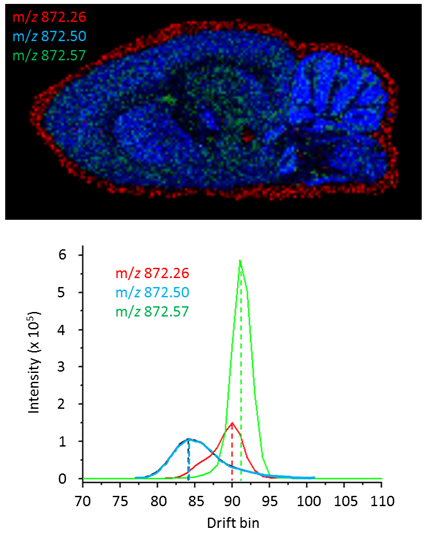Improve dynamic range and selectivity in Mass Spectrometry Imaging experiments using IMS
Published on 08 Nov 12
Writing in his section of the new ion mobility spectrometry (IMS) ebook (“Ion Mobility Mass Spectrometry - The Next 5 Years”) Dr. Glenn Harris (Vanderbilt University) explains how he has used ion mobility spectrometry as a post ionization separation technique in mass spectrometry imaging experiments using tissue samples (Figure 1). He found that the incorporation of IMS as a separation stage improved both the selectivity and the dynamic range possible in mass spectrometry imaging experiments. This led to a “dramatic enrichment” of the quality of mass spectrometry tissue images. Dr. Harris’ expects that with the introduction of more commercial IMS instruments increasing numbers of researchers will encounter the benefits of IMS.

If you want to read more about Dr. Harris’ work and that of other top researchers as well as their predictions for the future of IMS applications download the free ebook “Ion Mobility Mass Spectrometry - The Next 5 Years”.